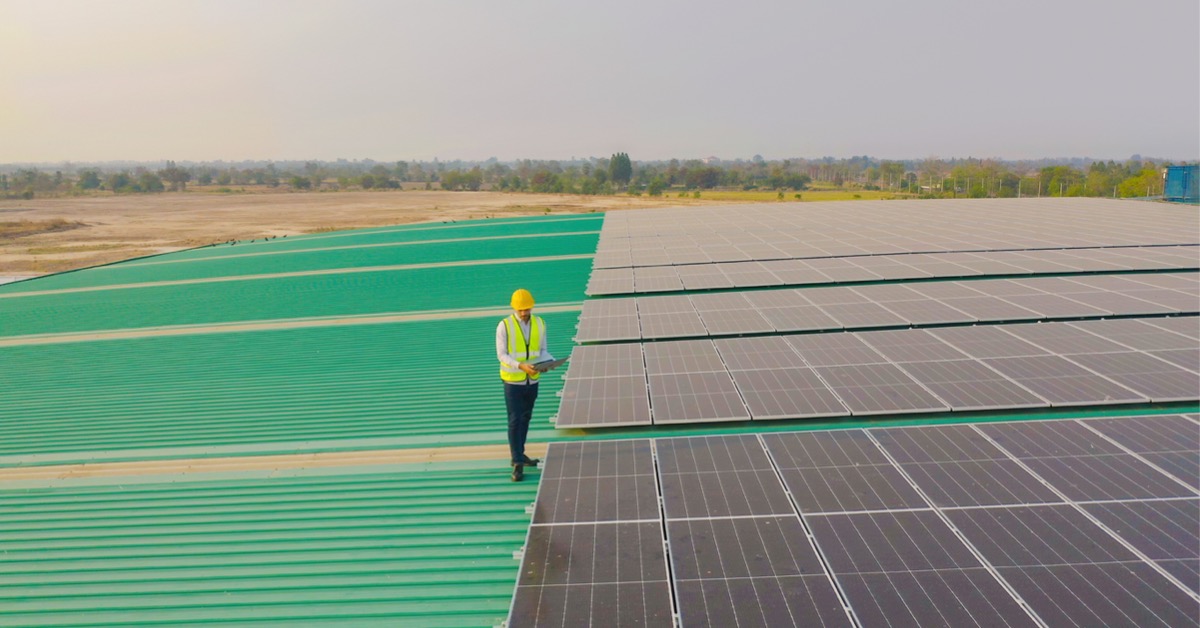We asked 15 AHJs about UL 3741. See what we learned.

This post was written by Josh Weiner, Solar Expert Witness & Solar Engineering Expert. Mr. Weiner has been at the forefront of the solar industry for over 20 years and is an industry leader on solar project development. Josh’s expertise spans both in-front of and behind-the-meter initiatives including residential, commercial & industrial, utility, grid-scale, and ev charging solar and storage applications.
Fire safety has always been a hot topic in commercial and industrial solar, now as much as ever.
First responders need to know that crews won’t be put in harm’s way in the event of an emergency. Section 690.12 of the National Electrical Code has led many C&I projects to adopt extra equipment that can reduce system voltage at the flip of a switch.
Contractors have to adhere to safety standards. But they also have to look for opportunities to simplify construction and keep costs under control. Compliance can increase system costs, requiring additional hardware, longer installation times, and time-consuming operations and maintenance.
Manufacturers are starting to bring forward solutions that aim to address safety, simplicity, and cost. Inverter maker SMA America and mounting system supplier Sollega have obtained certification showing that the Sollega FastRack 510 and the SMA Sunny Tripower CORE1 meet the Underwriters Laboratory (UL) 3741 definition of a Photovoltaic (PV) Hazard Control System, as first reported by Solar Builder.
The finding is significant. It means projects can meet rapid shutdown requirements without needing module-level power electronics or mid-circuit interrupters. With permitting approval, contractors can look forward to a whole new category of system design options for rapid shutdown compliance. Sepi provides system design among our project planning services.
But one big question remains: What will the authorities having jurisdiction do?
AHJs are key stakeholders
Developers and asset owners invest a lot of time and money in C&I projects. Investors want to mitigate risk. You increase the risk of project delays any time you stand first in line for approval with a new solution.
The US has more than 20,000 cities and counties. Naturally, we couldn’t ask each one for an opinion on PV Hazard Control Systems. But as a service to the industry, we selected 15 AHJs in communities that install high volumes of solar projects. We included municipalities from the East Coast, the Midwest, the Rocky Mountains, the Pacific Coast, and Hawaii.
We contacted agencies where our communications team had direct contact information for at least one senior official in the department. Many did not respond during the one-week response period we provided.
The variety of responses and the response rate, at 20 percent, underscores some of the industry’s perennial challenges with project permitting. Not only the inconsistency from one jurisdiction to another but sometimes a lack of transparency.
Here are the responses we received.
UL 3741 approval in Sacramento, California
Michael Bernino, Sacramento’s supervising building inspector, consulted with an electrical plan reviewer and concluded that PV Hazard Control Systems would be treated as a design choice which is allowed by code.
“Given the fact that the proposed product is UL listed, it would be approved as code compliant,” Bernino said.
Alternative review process in Tampa, Florida
Florida has not yet adopted the 2020 NEC, which includes the UL 3741 standard for PV Hazard Control Systems. The Florida Building Code incorporates the previous 2017 code.
Until Florida adopts the 2020 NEC, JC Hudgison, Tampa’s construction services center manager and chief building official, suggests an alternative. Try an Alternative Means & Method Request (AMMR) to get projects with PV Hazard Control Systems approved.
The AMMR process gives building officials discretion to approve system designs that satisfy and comply with the intent of existing code. Designs must also provide at least an equivalent measure of fire resistance and safety.
Alternative review in Napa County, California, too
The City of Napa’s Building Division issues permits for commercial solar systems. But a senior building inspector, when asked about UL 3741, directed us to inquire with the county Fire Marshall.
Fire Plans Examiner Adam Mone explained that the Fire Marshall’s review would be limited to a comparison of system designs as presented against the 2019 edition of the California Fire Code. Mone encouraged us to talk with Napa County’s Building Division about compliance with the 2019 edition of the California Electrical Code.
We will update this post if we get Napa County’s perspective on UL 3741 PV Hazard Control Systems. UPDATE: According to Interim Chief Building Official Harvey Higgs, Napa will also accept UL 3741 PV Hazard Control Systems as an alternate means until January 1, 2023, when the 2022 edition of the California Electrical Code takes effect and the devices are explicitly allowed by code.
We will post additional responses from other jurisdictions too.
Ask an AHJ
Want our communications team to ask an AHJ in your community about approval for PV Hazard Control Systems? Send a message through our contact page or email us at hello@sepisolar.com.
Also keep an eye on our LinkedIn page. We post daily content for renewable energy professionals, including our new monthly feature: Ask an AHJ.


